NEARLY DOUBLE THAT OF INTERNATIONAL COLLEAGUES
More specifically, in terms of survey results, 64% of teachers in Vietnam said they are using artificial intelligence (AI) to teach and support students, ranking 5th globally, behind the United Arab Emirates (UAE), Singapore (both at 75%), New Zealand (69%) and Australia (66%). This rate is nearly double the global average (36%) and significantly different from some major economies such as the US and UK.
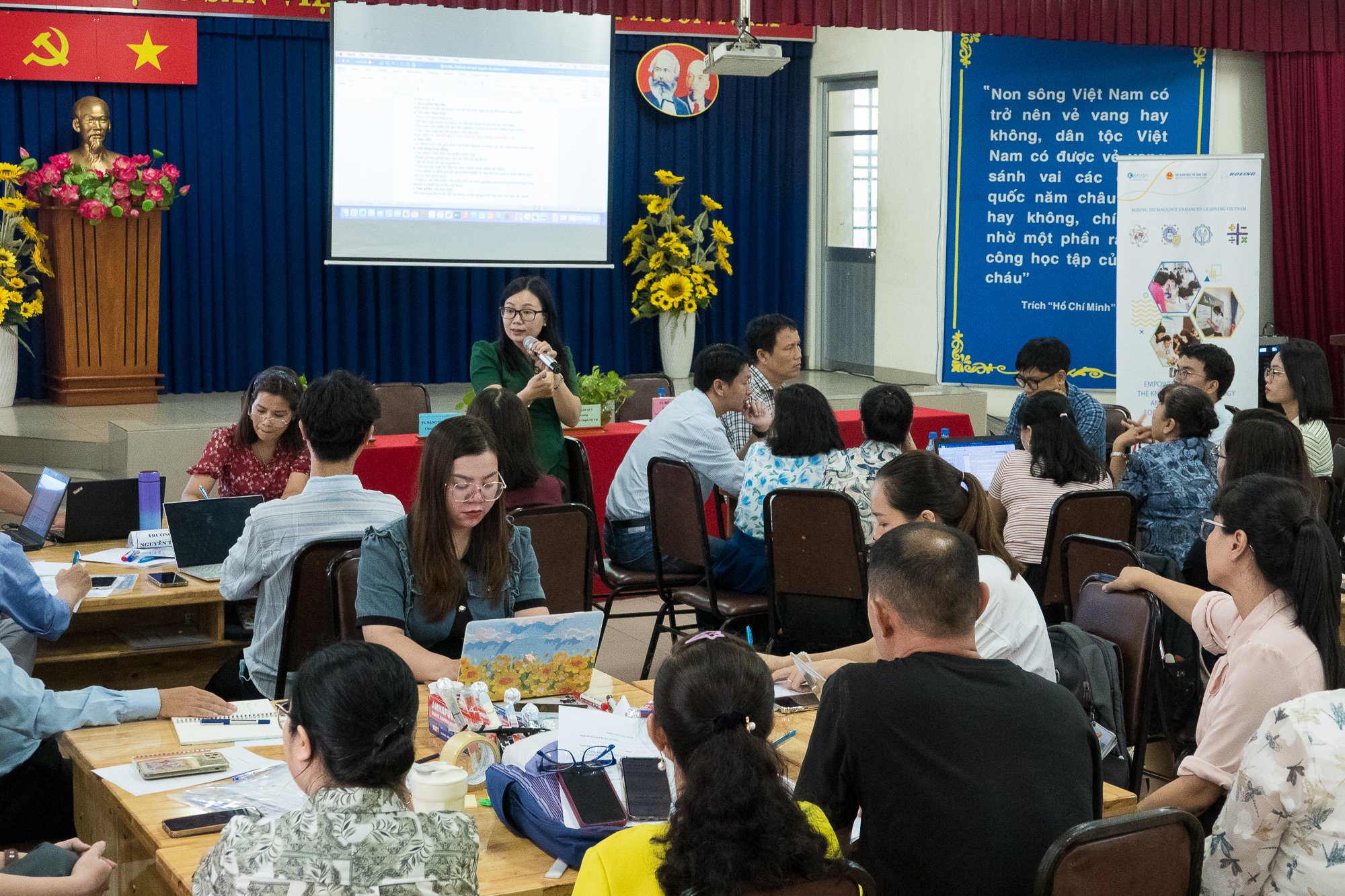
Teachers participate in training on applying AI in STEM
PHOTO: NGOC LONG
In contrast, Japan and France are at the bottom of the list in terms of teachers using AI, with data recording only 17% and 14%, respectively.
In terms of application methods, most teachers in Vietnam (95%) use AI to prepare lesson plans or design learning activities, in addition to activities such as researching and summarizing a topic (91%), helping students practice new skills in real-life situations (83%).
The OECD added that among Vietnamese teachers who admitted not using AI in their teaching in the 12 months prior to the survey, 60% said they did not have enough knowledge and skills to teach with AI (15% lower than the average), while 71% said their schools lacked the infrastructure to apply AI (34% higher than the average).
TALIS also surveyed teachers' attitudes towards AI and found that Vietnamese teachers are the most optimistic about the convenience of AI. Because 91% of teachers agree that AI helps teachers prepare or improve lesson plans, 90% agree that AI allows teachers to prepare learning materials suitable for different abilities of students, and 83% agree that AI helps teachers automate administrative tasks.
In the above three indexes, Vietnam ranked first among 55 educational systems participating in the survey, according to OECD statistics.
This optimism continues to be evident as only 39% of Vietnamese teachers believe that AI will create opportunities for students to cheat by presenting other people’s work as their own, the lowest rate among the education systems surveyed and also significantly lower than the OECD average (72%).
N REASONS WHY TEACHERS PREFER TO USE AI
According to experts, the fact that Vietnamese teachers are among the world's leading teachers in the application of AI stems from many factors, including the push from policies and training programs implemented by the education sector from local to central levels. A notable highlight is the Educational Innovation with AI (EEAI) project of RMIT University Vietnam, which last summer coordinated with the Ministry of Education and Training to organize online training on AI application in teaching and learning for more than 350,000 teachers and education managers nationwide.
TALIS is the world's largest international survey of teachers and education managers, assessed every 5 years and now increased to 6 years. In Vietnam, 4,550 teachers and principals at 202 schools nationwide participated in the survey from March 28 to April 5, 2024. Meanwhile, globally, the survey recorded the opinions of about 280,000 teachers and principals at 17,000 secondary schools and a small number of teachers and principals at primary and high schools, according to OECD.
Dr. Tran Duc Linh, Project Manager, and Dr. Pham Chi Thanh, Deputy Project Manager of EEAI, both working at the Faculty of Science, Engineering and Technology at RMIT University Vietnam, said that the training course attracted teachers from kindergarten, primary school to college and university. Many older teachers also participated very actively. "The teachers shared that it had been a long time since they had the opportunity to experience the role of a learner and that the program content could be applied immediately to teaching," Dr. Linh said, adding: "The encouragement of the Ministry of Education and Training and the timely training program helped remove many barriers, creating motivation for teachers to be more confident when applying AI."
According to Dr. Linh, many teachers who were previously concerned about AI have now mastered the tools and even programmed their own learning materials and websites to serve teaching and learning management activities at their units.
In parallel with training activities, the EEAI project also operates an online community of more than 280,000 teachers, where teachers regularly exchange and share experiences in applying AI in education.
"AI is being accepted quickly and positively, in line with the state's digital transformation orientation. We have witnessed clear changes over the years. In 2024, many teachers were still limited in using AI tools; but just one year later, they had mastered the foundation, operated faster and boldly put AI into practice at educational institutions," Dr. Thanh shared.
However, the two experts also emphasized that the use of AI must be accompanied by awareness of data security and understanding of the boundary between "application" and "abuse" of AI, both for teachers and students. "The tool itself is neither good nor bad, what matters is how we use it effectively," the two doctors commented.
Specializing in developing free AI tools for teachers, Master Le Nguyen Nhu Anh, founder of the Edtech Corner platform, a PhD student in education at the University of South Australia (Australia) and a lecturer at the Ho Chi Minh City University of Education, said another reason why Vietnamese teachers actively apply AI comes from the nature of their work. "Vietnamese teachers have more work to do compared to their foreign colleagues and this creates a lot of pressure," said Mr. Nhu Anh.
Therefore, according to Master Nhu Anh, when knowing that AI can support solving work at high speed with acceptable results, many teachers have turned to this tool as a matter of course, from preparing teaching materials to explaining official documents and circulars from the education sector.
According to Mr. Nhu Anh, when the demand increases, multi-tasking AI tools like ChatGPT cannot effectively meet the special professional needs in the field of education, such as evaluating assignments and preparing lesson plans. This requires the parties to guide teachers to find more tools suitable for their purposes as well as organize systematic, in-depth training instead of just stopping at introducing features.
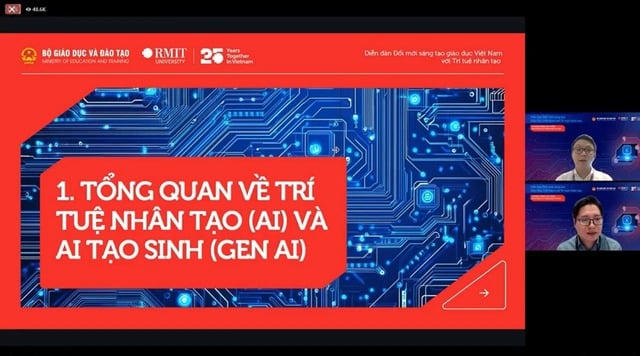
Online discussion session in the AI training program for teachers and education managers nationwide, jointly organized by the Ministry of Education and Training and RMIT University Vietnam
PHOTO: SCREENSHOT
NOTES IN THE AI ERA
Master Do Nguyen Dang Khoa, administrator of the non-profit online forum "People of TESOL" (tentatively translated: English Teacher Community), is a PhD candidate in English teaching and applied linguistics at Warwick University (UK), pointed out that after a period of viewing AI as a "miracle" that could create many products, many teachers returned to previously available materials "because it is inherently more reliable and safer than AI-generated materials".
Another trend, according to Mr. Khoa, is that current English teaching seminars have a lot of content about AI and reports on the application of AI in teaching attract a lot of participants. "It feels like people are really looking forward to it and want to proactively find more tools for themselves. In fact, thanks to AI, teachers can do many things they couldn't do before," he shared.
In addition, compared to the international level, Master Khoa found that many foreign teachers are unfamiliar with some AI tools while Vietnamese people know them quite well. This is his actual observation when attending an international conference on teaching English, the world's leading scale, held in the US last year.
Master Nhu Anh noted that AI is reducing digital inequality among teachers, helping teachers in remote areas to still be able to apply new technology. However, if the implementation is not synchronous and there is no coordination between the parties, this tool can become the cause of increasing digital inequality, causing teachers who do not have access to AI to be increasingly left behind.
AI also creates challenges in the depth of pedagogical capacity, this expert emphasized. Because when using AI to think and reason for them too much, this tool can stifle teachers' creativity. "Therefore, it is necessary to clearly guide what AI can and cannot do, at the same time, teachers also need to improve their pedagogical skills to re-evaluate products created by AI," said Mr. Nhu Anh, raising the question: "If we let AI do everything for us, who are we in the end?"
Source: https://thanhnien.vn/ly-do-giao-vien-viet-nam-xep-thu-5-toan-cau-ve-ty-le-dung-ai-18525111721424209.htm
































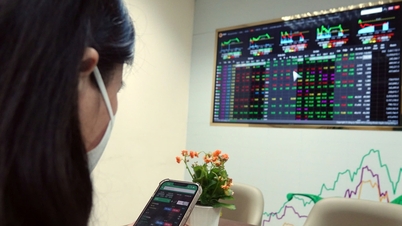


![[Photo] General Secretary To Lam and National Assembly Chairman Tran Thanh Man attend the 80th Anniversary of the Traditional Day of the Vietnamese Inspection Sector](https://vphoto.vietnam.vn/thumb/1200x675/vietnam/resource/IMAGE/2025/11/17/1763356362984_a2-bnd-7940-3561-jpg.webp)




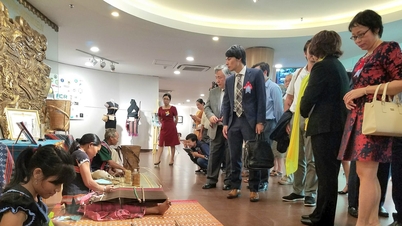







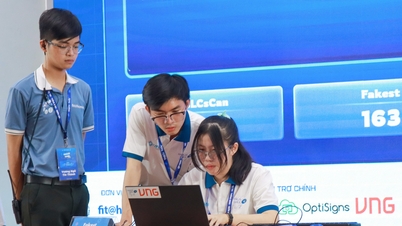






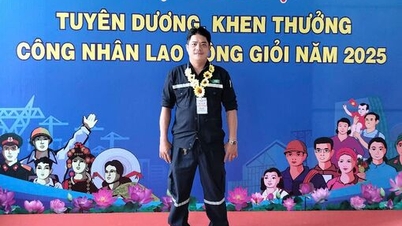



















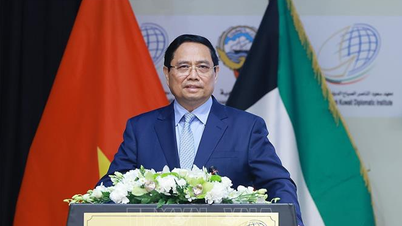











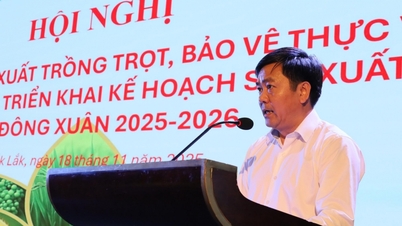


















Comment (0)